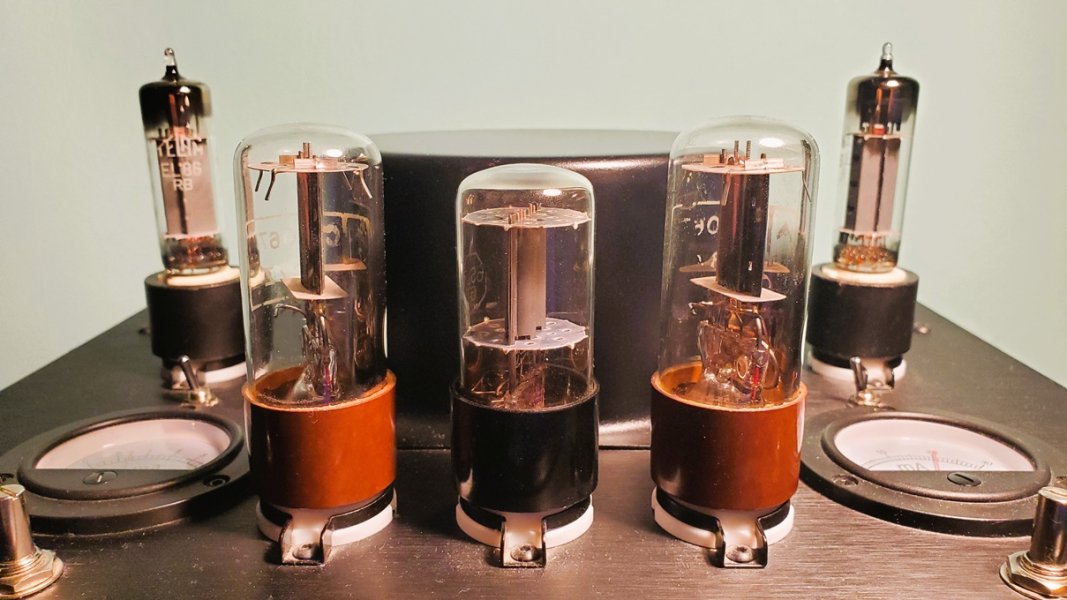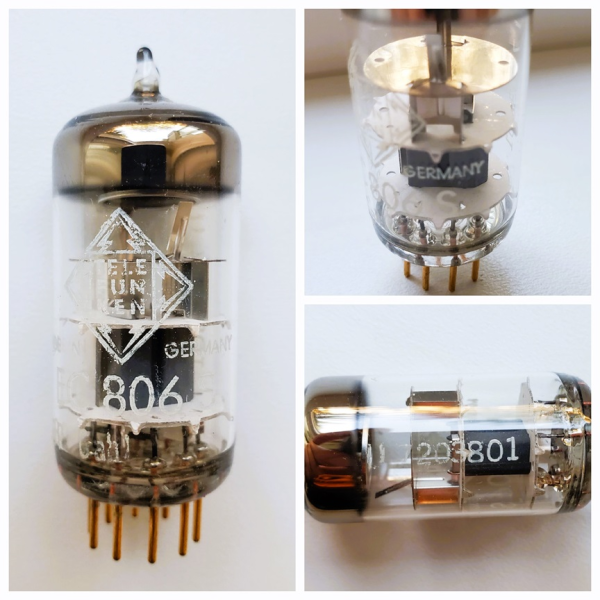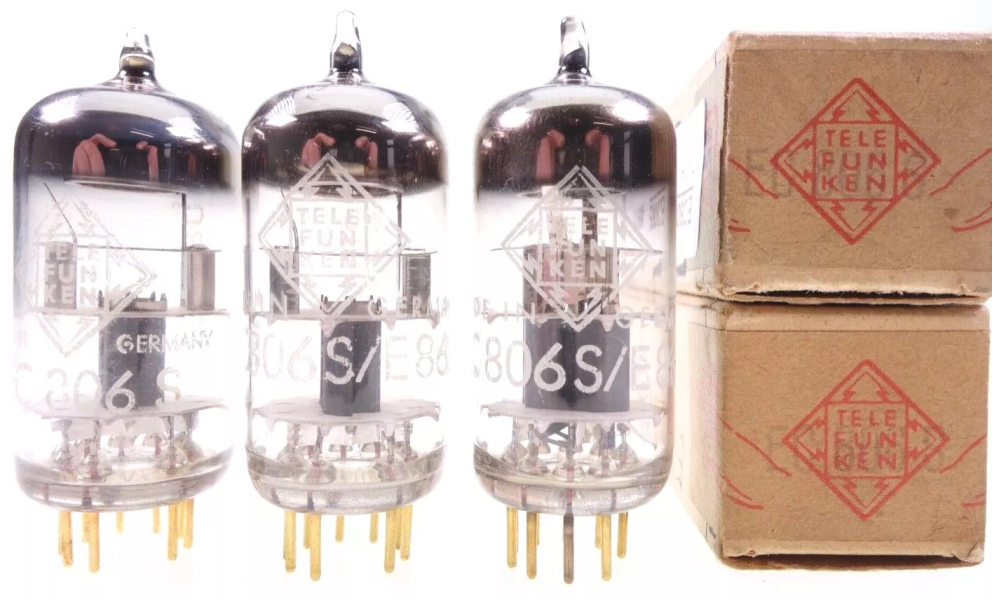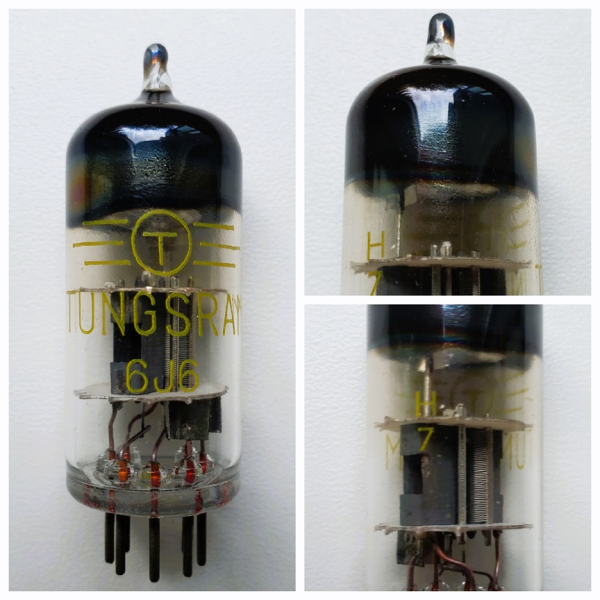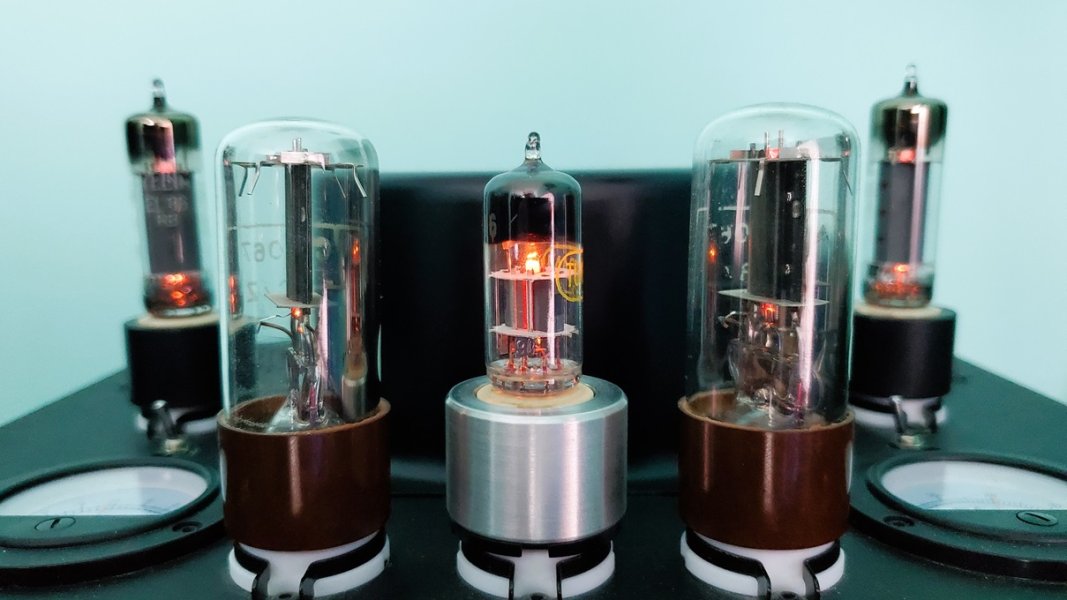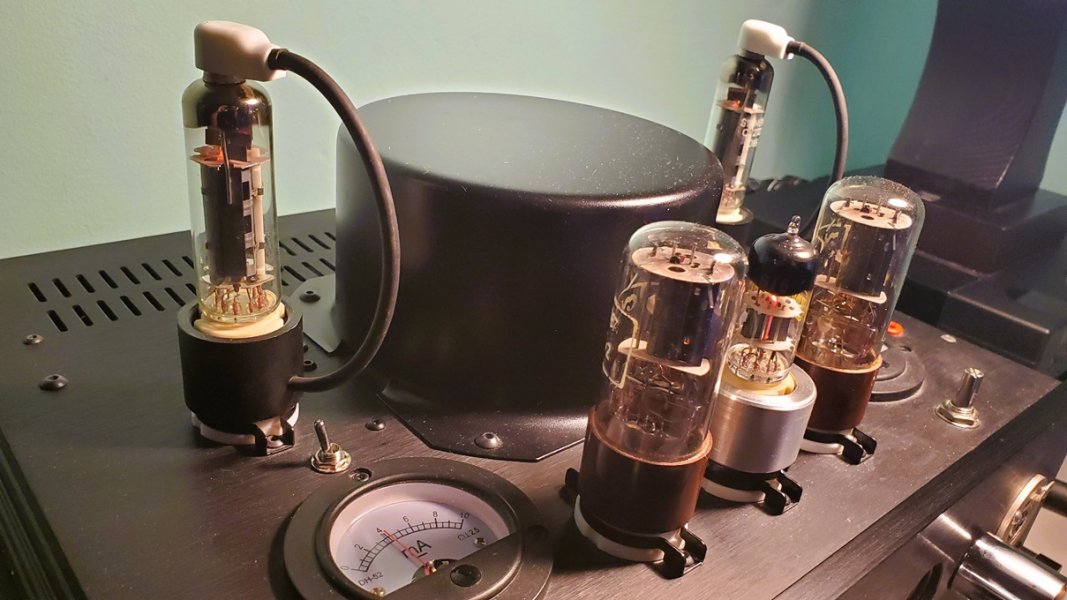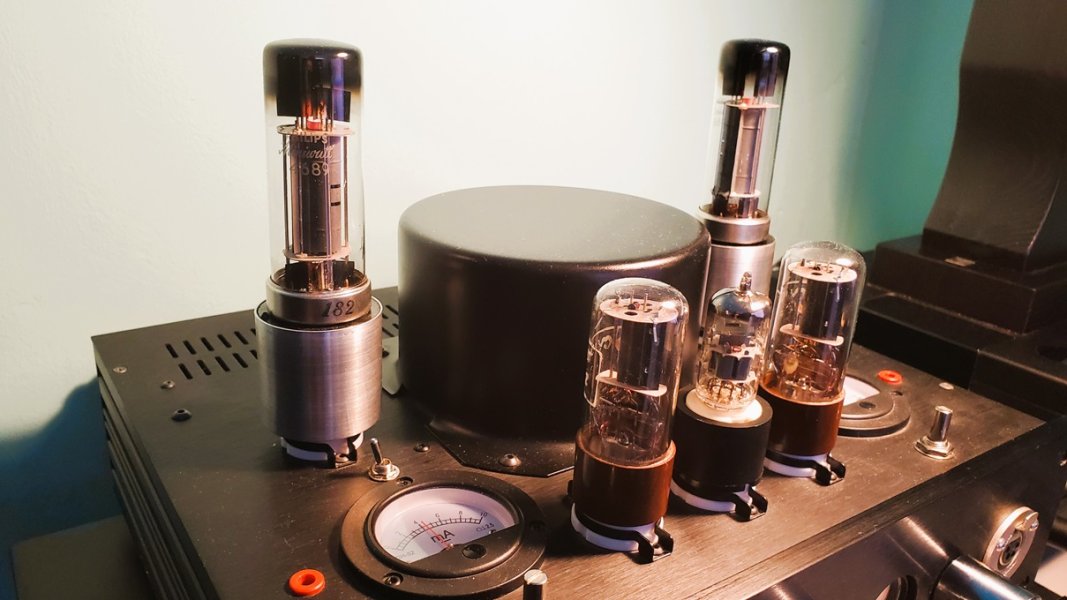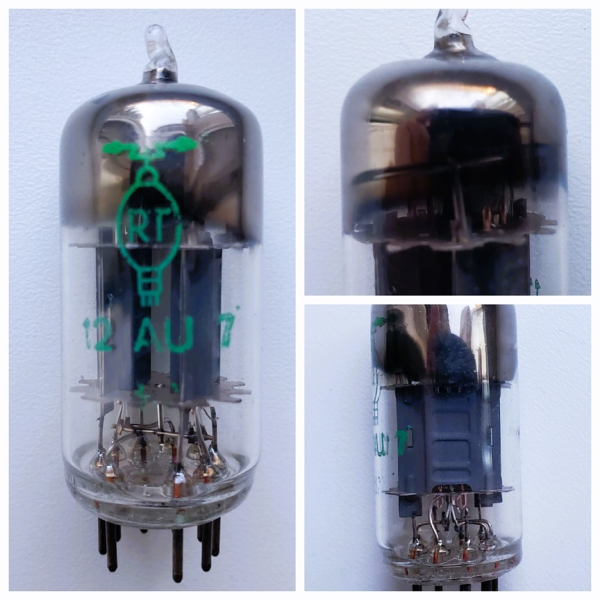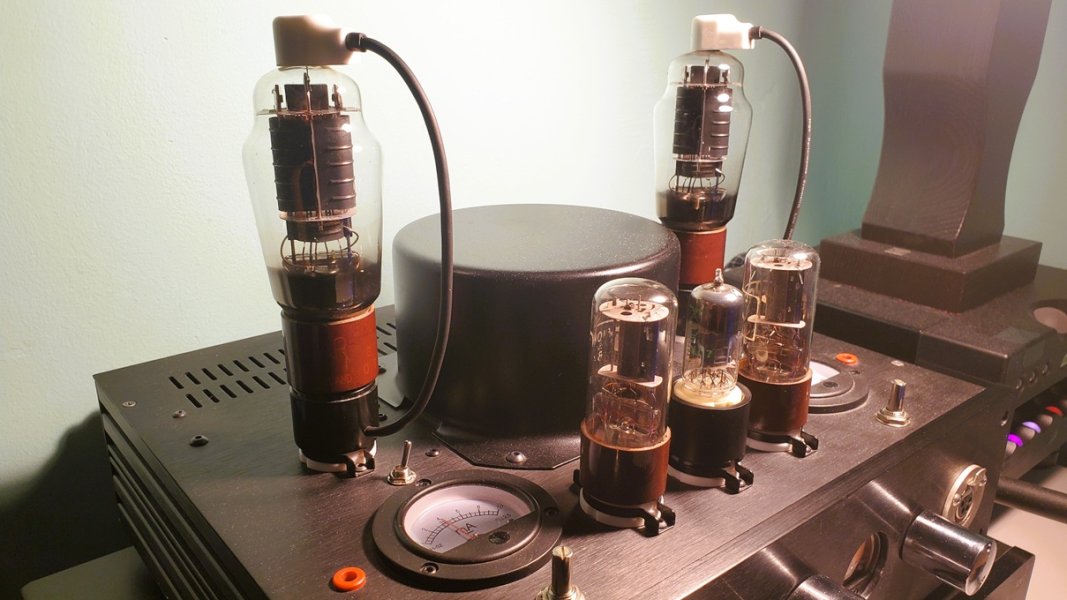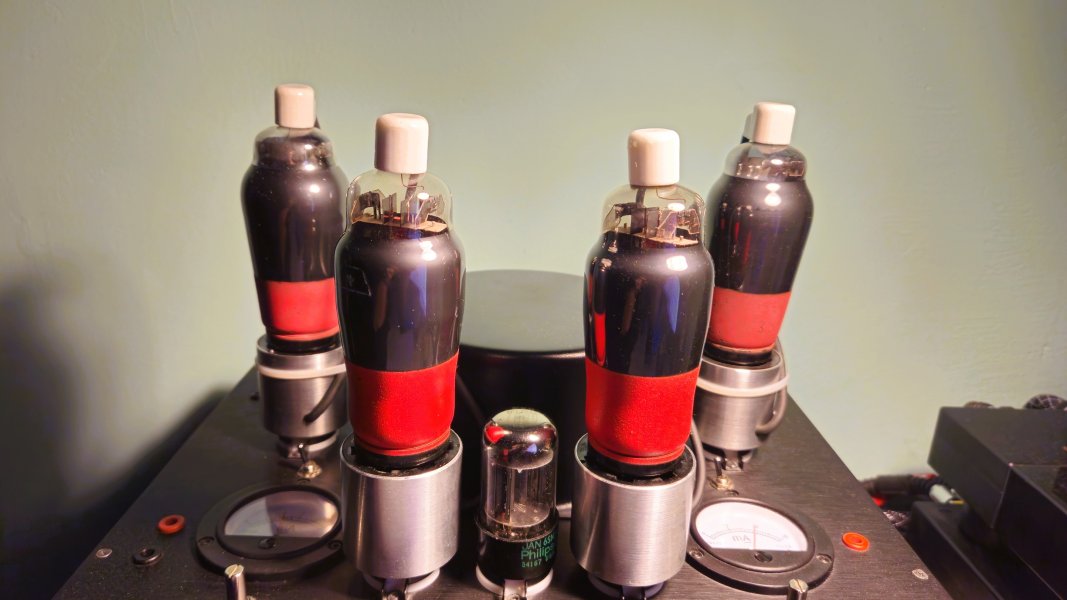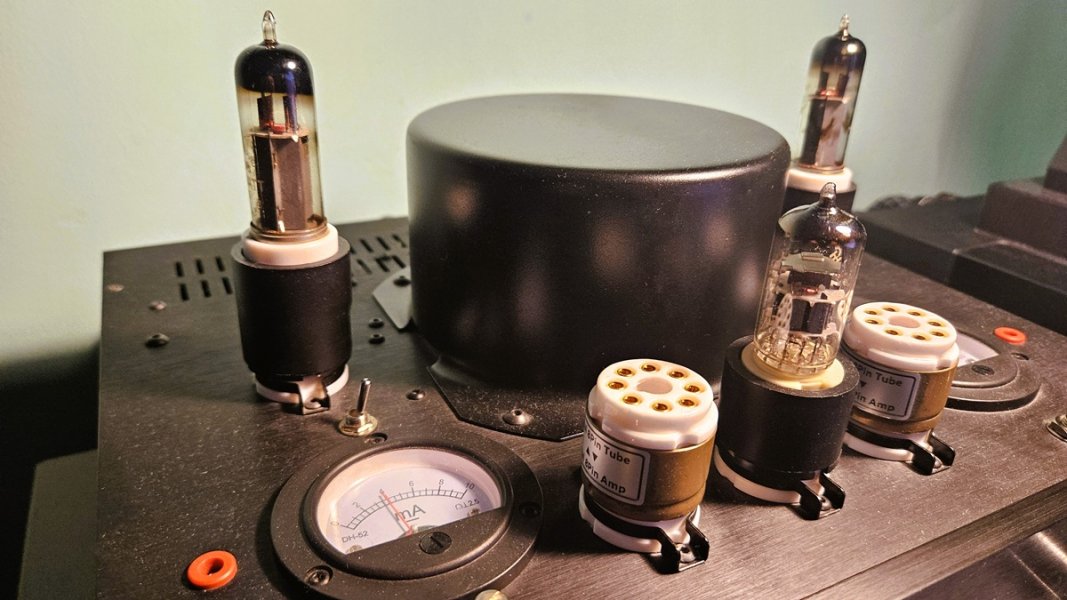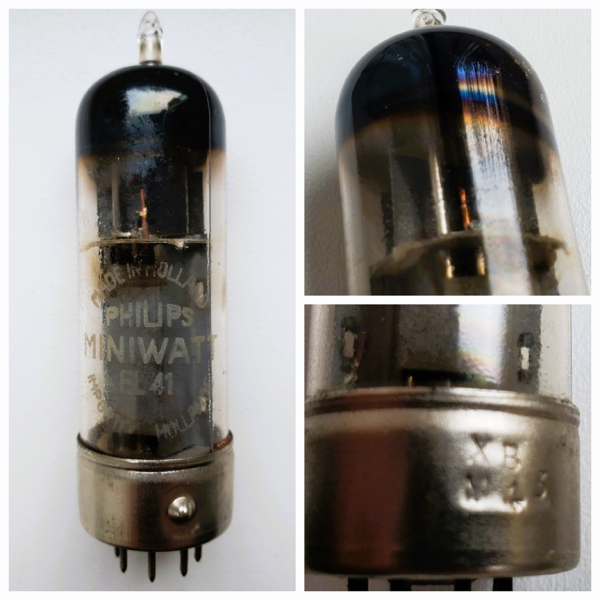Looking at the datasheet of 6AU6 during the morning coffee, and also reading some remarks on other forums where people claim this is a sharp cut-off pentode not suitable for audio, I realize I am not quite using efficiently this tube at 180V/4mA. What I learned during the years is that these tubes perform better when used around the typical operation from the datasheet. So if we look here, we see the following:
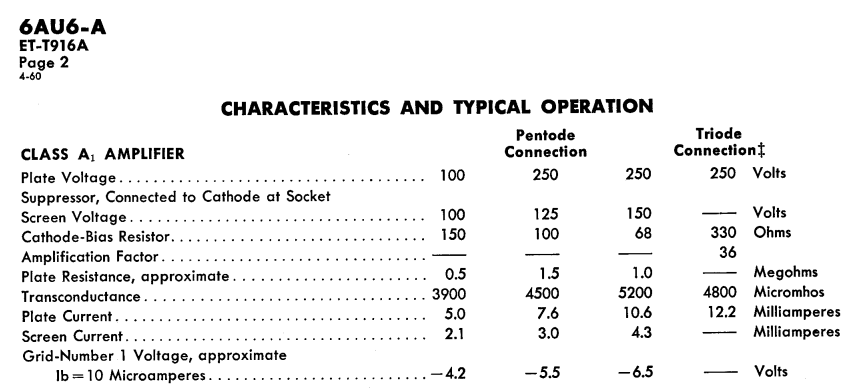
Now, if I would try to avoid forcing the tube at maximum plate dissipation, even if this seems to be 3.5W, I guess a better way to use this would be maybe around 200Va and 10mA. I guess if you are around 2/3 of the max plate dissipation you are fine.
This reminds me that my amplifier is limited, my next one if I will ever own one will have variable plate voltage on both stages and also a way to set very different currents. For example to be able to use EL34 at maybe 400Va and 60mA on output and 6AU6 at 200Va and 10mA on input, then to switch to EL86 at 200Va and maybe again 60mA while putting input stage at 100Va and 10mA for E88CC. Sounds crazy, I know, but this is the amplifier which will allow to me to elevate my experiments. Of course, this adds a lot of complexity and nobody is crazy to build me that, maybe I'll build it myself when I retire. And why not, gyrator loaded plates, fixed grid bias or CCS and who knows what more. For sure solid state and tube rectification switchable. When using big boys to switch to solid state and when wanting a more creamy old style of sound to switch to tube rectification and use old european 4 volt rectifiers like AZ1. In the end the tubes I love the most are old european pentodes from the Philips red series. It is also true that the tube socket I hate the most is the european side contact one. Love and hate relationship, since we are in the st. Valentin weekend. LOL
PS. Many associate 6AU6 with EF86. I never tried EF86 but I tried some "TV tubes" like EF41, EF80, EF85, EF183, EF184 and some of them were not so bad. All go towards a more sterile sound, but the detail retrieval is quite ok. Of course, others are much better so only crazy people like me found these experiments to be valuable.
PS2. Forgot that I need 4V and 6.3V heaters for output and 6.3V and 12.6V heaters for input. One of the reasons is that I have this tube, Philips FDD20 13V heaters:
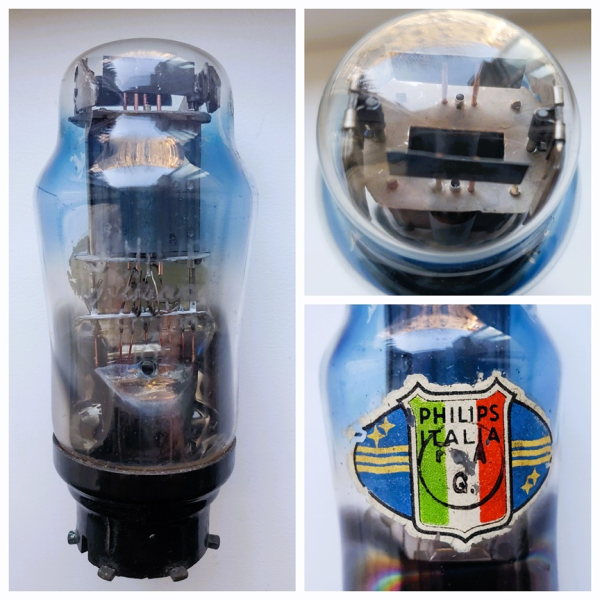
They say this is close to a 6N7, so double triode common cathode and should work fine with 12.6V heaters. I can try to use it with external power supplied adapters but well, where would be the beauty?

Now, if I would try to avoid forcing the tube at maximum plate dissipation, even if this seems to be 3.5W, I guess a better way to use this would be maybe around 200Va and 10mA. I guess if you are around 2/3 of the max plate dissipation you are fine.
This reminds me that my amplifier is limited, my next one if I will ever own one will have variable plate voltage on both stages and also a way to set very different currents. For example to be able to use EL34 at maybe 400Va and 60mA on output and 6AU6 at 200Va and 10mA on input, then to switch to EL86 at 200Va and maybe again 60mA while putting input stage at 100Va and 10mA for E88CC. Sounds crazy, I know, but this is the amplifier which will allow to me to elevate my experiments. Of course, this adds a lot of complexity and nobody is crazy to build me that, maybe I'll build it myself when I retire. And why not, gyrator loaded plates, fixed grid bias or CCS and who knows what more. For sure solid state and tube rectification switchable. When using big boys to switch to solid state and when wanting a more creamy old style of sound to switch to tube rectification and use old european 4 volt rectifiers like AZ1. In the end the tubes I love the most are old european pentodes from the Philips red series. It is also true that the tube socket I hate the most is the european side contact one. Love and hate relationship, since we are in the st. Valentin weekend. LOL
PS. Many associate 6AU6 with EF86. I never tried EF86 but I tried some "TV tubes" like EF41, EF80, EF85, EF183, EF184 and some of them were not so bad. All go towards a more sterile sound, but the detail retrieval is quite ok. Of course, others are much better so only crazy people like me found these experiments to be valuable.
PS2. Forgot that I need 4V and 6.3V heaters for output and 6.3V and 12.6V heaters for input. One of the reasons is that I have this tube, Philips FDD20 13V heaters:

They say this is close to a 6N7, so double triode common cathode and should work fine with 12.6V heaters. I can try to use it with external power supplied adapters but well, where would be the beauty?
Last edited:




